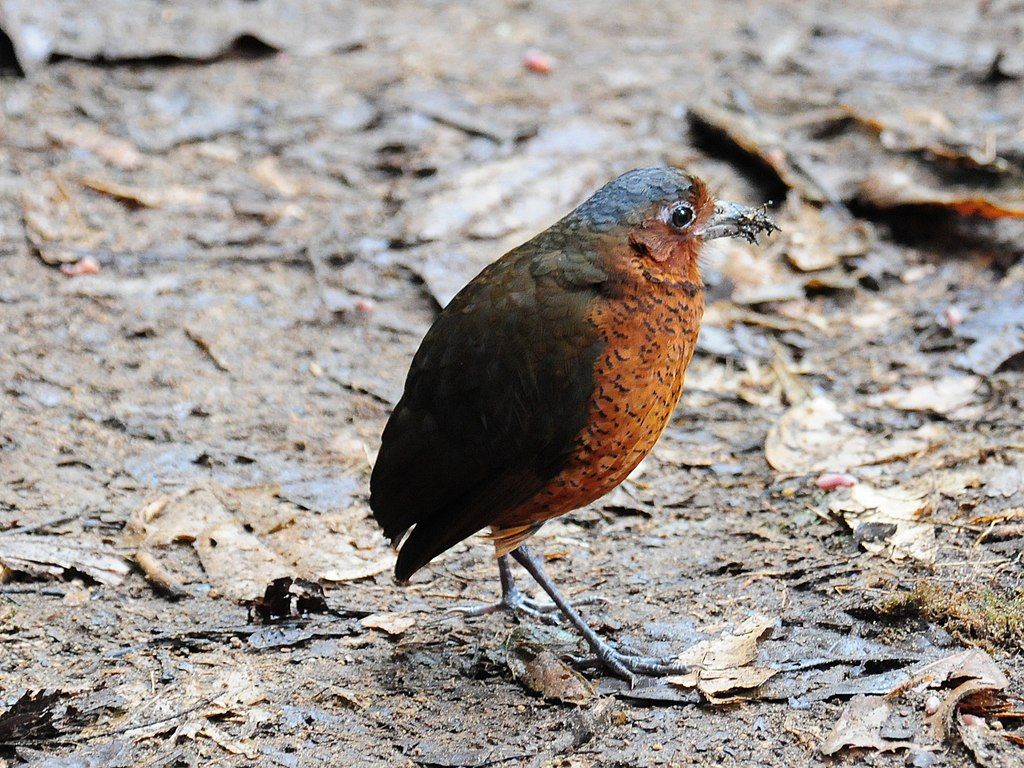
1 February 2023, WINGS in Ecuador: Day 4, birding in Mindo and the NW Andes
Antpittas (family Grallariidae) are forest birds of Central and South America that specialize in eating ants. Though they nest in trees, they spend most of their time on the ground where their brown-rust plumage provides excellent camouflage. They are usually heard, not seen.
The typical antpitta is often described as a “ball on sticks” because most of them are small, plump and nearly tailless with long legs.
The giant antpitta (Grallaria gigantea) is far from typical. He’s the length of an American robin but weighs four times as much. He’s same weight as a pileated woodpecker and triple the weight of other antpittas in his area. Wikipedia explains:
G. gigantea is, as its name suggests, a huge antpitta. Length ranges from 24 to 28 centimetres (9.4 to 11.0 in) and weight is up to 300 grams (10.6 oz), which makes it easily the heaviest of all tracheophone suboscine birds. Its nearest rival, the chestnut-throated huet-huet [native to Chile], is not known to exceed 185 grams (6.5 oz).
— Wikipedia: Giant antpitta
Usually a giant antpitta is never seen but you know he’s out there when you hear a sound like an eastern screech-owl that rises at the end. (Do you hear the rain in this audio clip?)
We expect to see him at Refugio Paz de las Aves because bird whisperer Angel Paz can call them into view to snack on earthworms.
(photo from Wikimedia Commons, audio from Xeno Canto; click on the media links to se the originals)
I remember Angel from a trip that we made to Ecuador before the pandemic. It’s amazing that he’s learned to entice these seldom seen birds to appear on a regular routine with earthworms. We saw three different species of ant pittas on that trip. On a recent trip to Costa Rica, a local guide directed our guide and group to a trail of army ants. We found three antbird species that were foraging on all of the insects disturbed by the army ants! It was an amazing spectacle. I can hardly wait for a chance to return to the tropics.